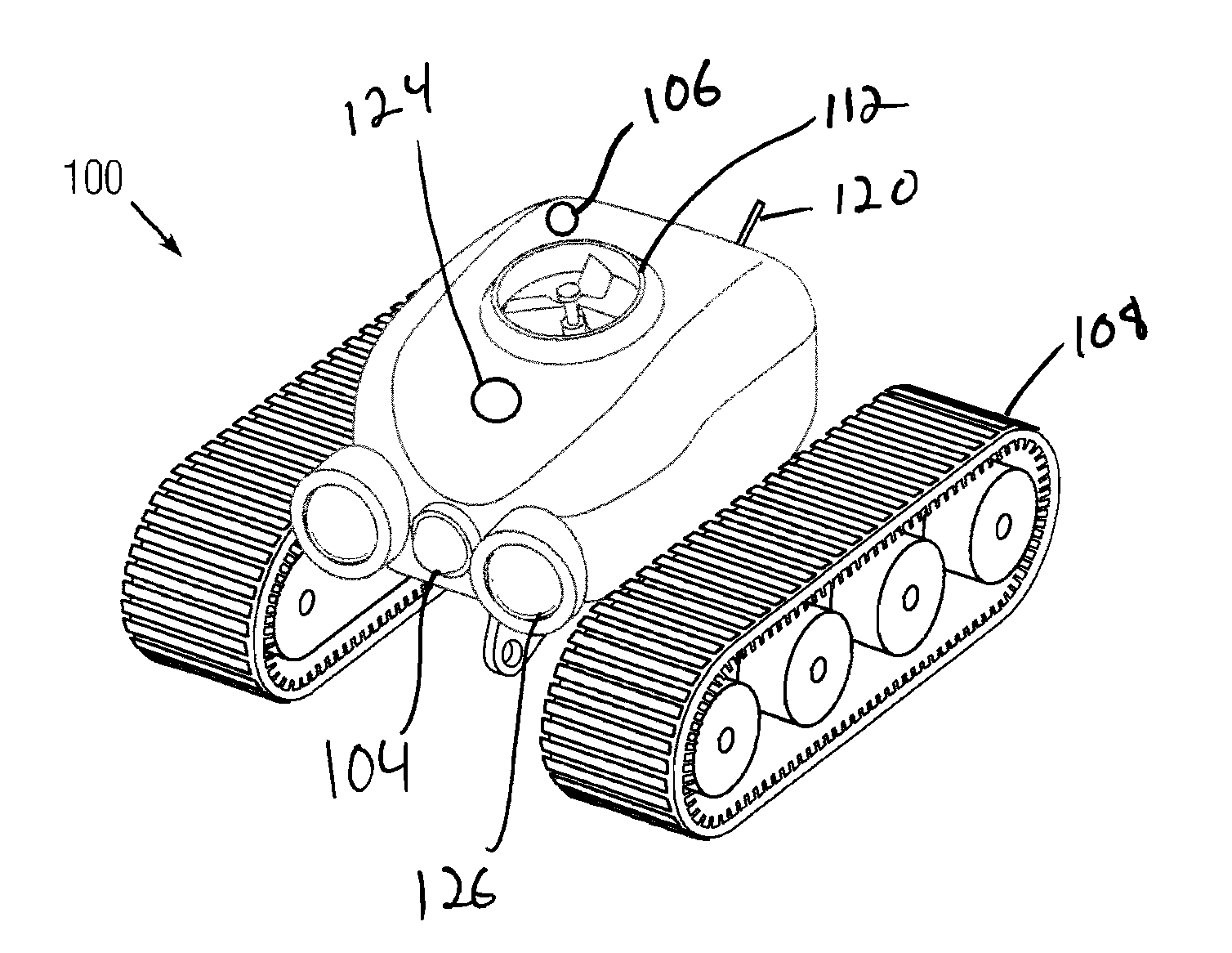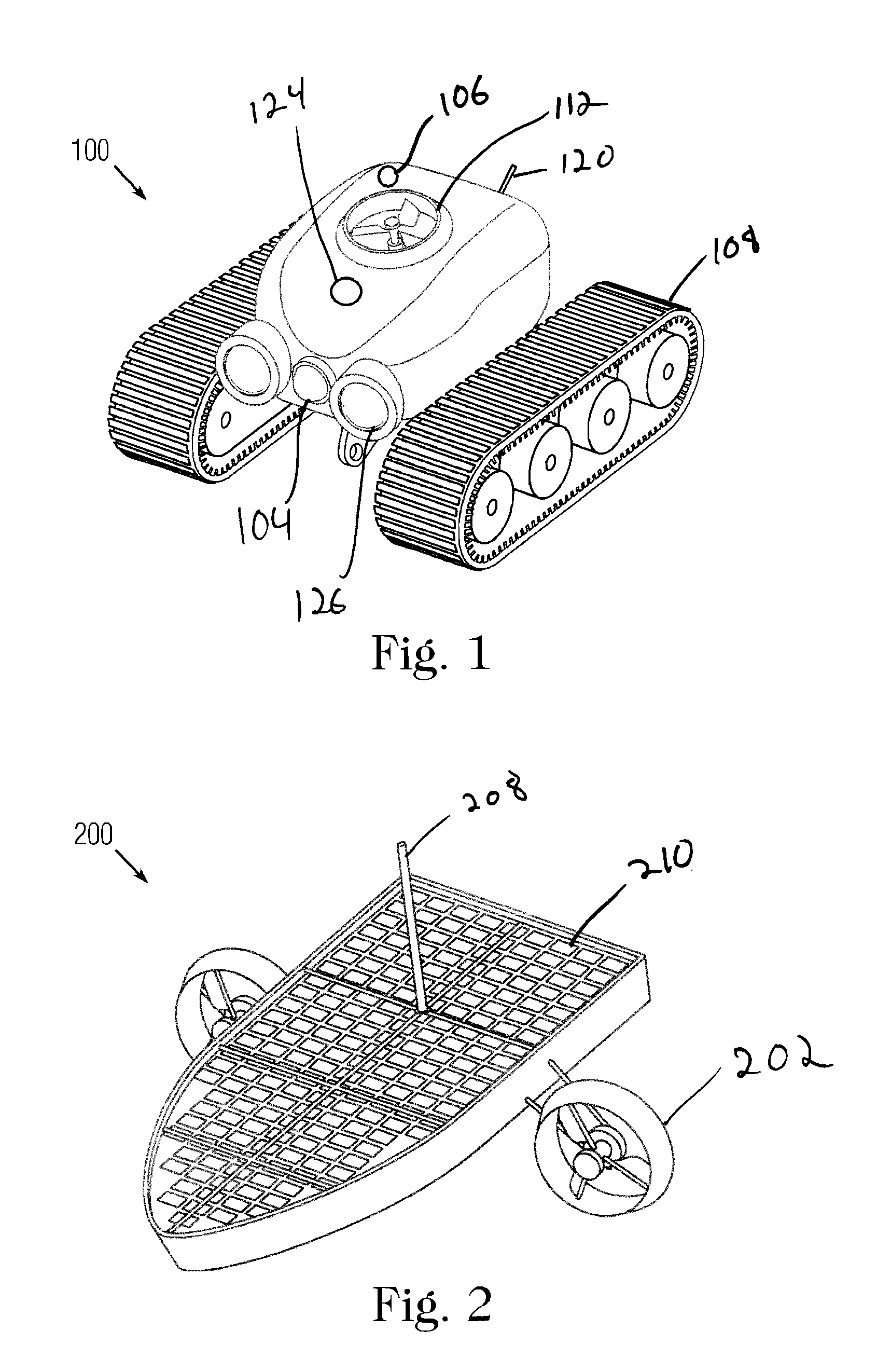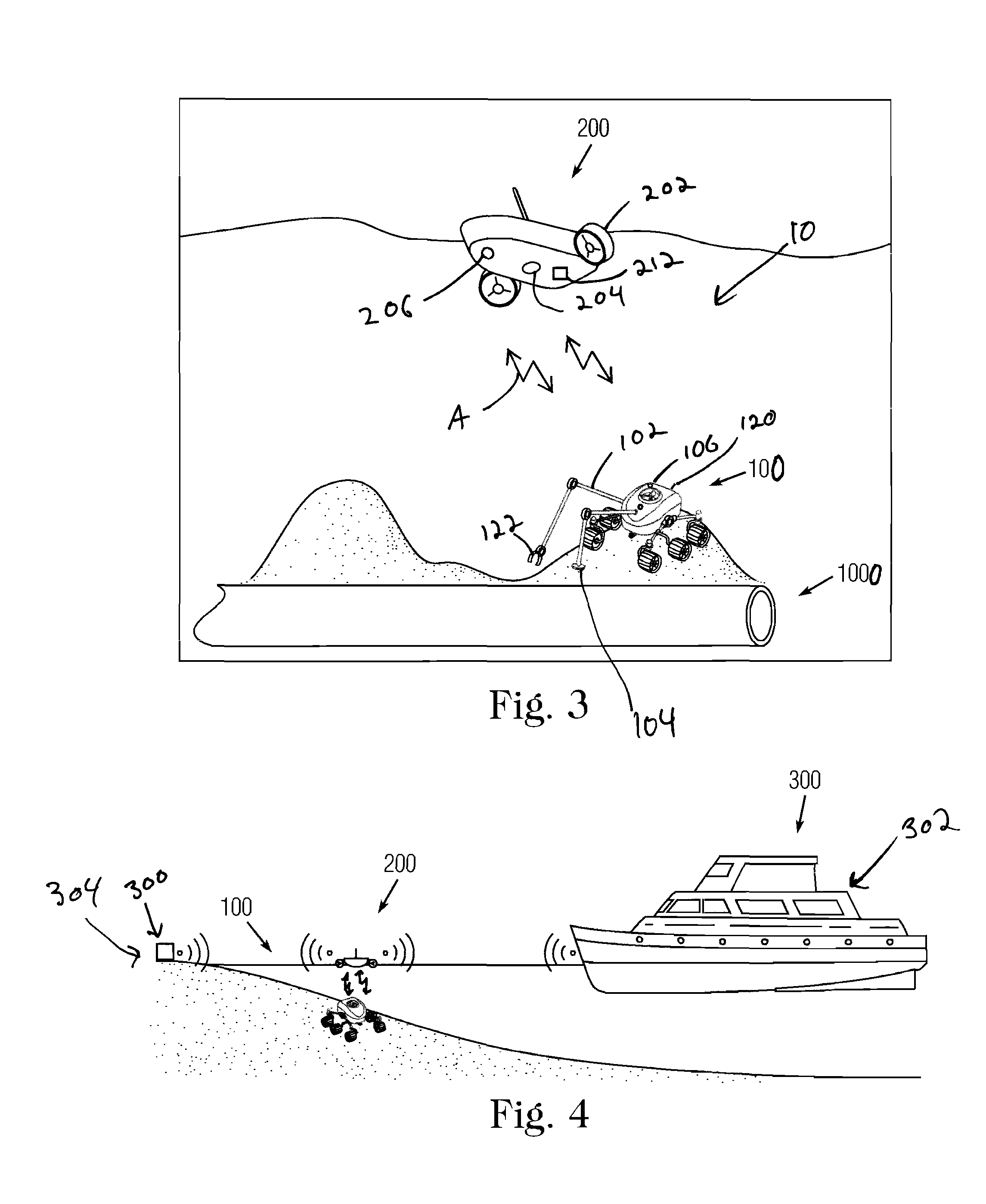Water environment mobile robots
a robot and water environment technology, applied in underwater equipment, special-purpose vessels, instruments, etc., can solve the problems of difficult inspection of infrastructure located in shallow water, high cost, and difficulty in using divers,
- Summary
- Abstract
- Description
- Claims
- Application Information
AI Technical Summary
Benefits of technology
Problems solved by technology
Method used
Image
Examples
Embodiment Construction
[0034]Referring to FIGS. 1-3, an aquatic environment robotic system 10 includes an underwater robot 100 and a surface robot 200. The underwater robot 100 is structured so that it can dive under the surface of the water and perform various maintenance and inspection operations on underwater infrastructure. The surface robot 200 remains on the surface of the water and has its own propulsion system 202 so that it can move along the surface of the water in order to maintain close proximity to the underwater robot 100. As the underwater robot 100 moves underwater the surface robot 200 moves in a corresponding fashion in order to maintain proximity with the underwater robot. Since the surface robot 200 moves to stay in close proximity to the underwater robot 100, the distance between the two robots is maintained at a minimum. Accordingly, the communication distance through the water between the surface robot 200 and the underwater robot 100 is minimized. Minimizing the communication dista...
PUM
 Login to View More
Login to View More Abstract
Description
Claims
Application Information
 Login to View More
Login to View More - R&D
- Intellectual Property
- Life Sciences
- Materials
- Tech Scout
- Unparalleled Data Quality
- Higher Quality Content
- 60% Fewer Hallucinations
Browse by: Latest US Patents, China's latest patents, Technical Efficacy Thesaurus, Application Domain, Technology Topic, Popular Technical Reports.
© 2025 PatSnap. All rights reserved.Legal|Privacy policy|Modern Slavery Act Transparency Statement|Sitemap|About US| Contact US: help@patsnap.com



